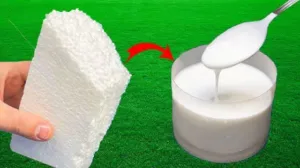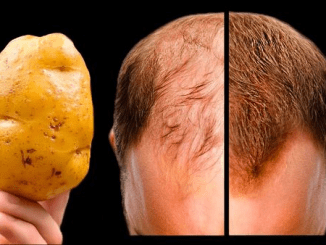
How to Make Powerful Super Glue from Styrofoam: The Hidden Chemistry Behind This Viral Trick
In a world where DIY solutions often rival store-bought products, one surprisingly simple chemistry hack has taken the internet by storm: making powerful super glue using nothing but Styrofoam and a common household solvent. This method taps into some fascinating chemical reactions that transform discarded materials into an ultra-strong adhesive. If you’re intrigued by science, sustainability, or just love a good hack, this guide will walk you through everything you need to know about making Styrofoam glue—and the chemistry that makes it work.
What You’ll Need
To create this glue, you only need two basic materials:
- Acetone (pure nail polish remover can work, but hardware-grade acetone is best)
- Styrofoam (such as takeout containers, foam cups, packing peanuts—avoid the biodegradable type)

How It Works
The magic behind this process lies in how acetone interacts with Styrofoam. Styrofoam is essentially polystyrene foam filled with air. When acetone is added, it breaks down the structure of the foam, causing the polystyrene to dissolve and collapse, releasing the trapped air. This results in a thick, sticky substance that, once applied, hardens as the acetone evaporates, leaving behind a strong plastic bond.
Step-by-Step Instructions
- Prepare Your Workspace
Work in a well-ventilated area, preferably outdoors. Acetone fumes can be intense and flammable, so keep away from open flames or heat sources. - Pour Acetone into a Glass Jar
Use a small glass container (plastic may degrade from the solvent). Start with about ¼ cup of acetone, which is enough for small glue batches. - Add Styrofoam Slowly
Break the Styrofoam into small pieces and gradually drop them into the acetone. You’ll notice the foam “melting” on contact. Keep adding until the mixture becomes thick and syrupy. It may take several handfuls of foam to achieve this consistency. - Stir Carefully
Using a wooden stick or disposable tool, stir the mixture to create a uniform paste. This thick goop is your homemade glue. - Apply the Glue
Use the sticky mixture immediately by applying it to the surfaces you wish to bond. It works exceptionally well on plastic, wood, ceramic, and even some metal surfaces. - Let It Cure
Allow the glue to dry and harden for several hours. As the acetone evaporates, the polystyrene hardens into a solid, forming a strong, durable bond.

Why It’s So Effective
The power of this DIY glue lies in the nature of polystyrene itself. Once the acetone evaporates, the leftover plastic forms a permanent bond that’s resistant to water, heat, and many household chemicals. It’s essentially a form of plastic welding, similar to how commercial adhesives like epoxy work.
Practical Uses
- Fix broken plastic or ceramic items
- Seal small cracks in tools or furniture
- Bond materials for craft or model-making
- Use as a lightweight filler or moldable patch
Caution and Safety Tips
- Always use gloves and eye protection when handling acetone.
- Avoid inhaling the vapors—wear a mask or work outdoors.
- Do not store the glue for long periods, as it hardens quickly.
- Keep the mixture away from children and pets.
Final Thoughts
This DIY super glue made from Styrofoam and acetone is not only a clever chemistry trick but also an eco-conscious way to reuse materials that would otherwise end up in a landfill. While it doesn’t replace every adhesive, it’s an incredibly useful and satisfying solution for many household and crafting needs.
So the next time you unwrap a takeout container or unpack a box with foam padding, think twice before tossing it—your next powerful adhesive might just be hiding in that trash.


